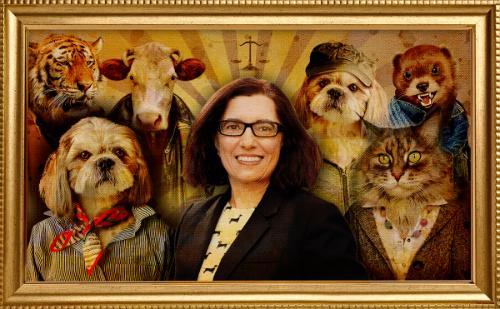A Man and his Music
Published9 November, 2020
Photo credit Tae Hoon Kim
Guitar virtuoso shares his influences, teaching style and thoughts about the future of jazz.

Bill Coon is composing. In his office, wedged between an upright piano and his desk, the longtime CapU Jazz instructor, Juno Award nominee and onetime recipient of Canada’s Jazz Guitarist of the Year award is taking a break from plucking strings to tinkle the ivories.
He recently finished two arrangements for trumpeter and singer Bria Skonberg’s concert with the Vancouver Symphony Orchestra, and he’s hard at work creating tunes for a 17-piece big band, featuring his wife Jill Townsend on lead vocals.
Growing up in Montreal and later studying orchestral arrangements under legendary composer Neil Chotem, Coon’s interest in jazz guitar started in the 1970s, playing two-and-three chord tunes and strengthening his repertoire by discovering the greats.
“I heard people like George Benson, and my curiosity led me to go backwards in time,” he said. “I would wonder who (Benson) listened to and found Wes Montgomery, then I’d look at who (Montgomery) listened to and I found Charlie Christian.”
“[Jazz] is unlike any other kind of music in the way it demands you to master your instrument, but you also have to be able to play with other people. You have to be able to stand in the spotlight when it’s your turn to shine, but you also have to be supportive to the other people in the group.”
As a young musician, Coon received two federal arts grants to study with Jim Hall and saves his greatest reverence for the American icon.
A legendary player whose warm, layered, harmonic and deftly-arranged solos intermingled jazz and classical technique with feeling and clarity, Hall’s work is a lodestar for every jazz guitarist who has picked up a six-string in the last six decades.
“He’s a giant of the guitar,” Coon said. “His playing opened doors for players like Bill Frisell, John Abercrombie and Pat Metheny to blossom.”
“It was life-changing for me to meet him, talk with him and play with him. That informs my teaching and playing to this day.”
Playing shows several times a week — often in combos with fellow CapU jazz instructors — keeps his skills sharp and inspires him to continue imparting his knowledge on his students.

“It’s really fantastic to see how good they become in such a short time. For them, it’s probably a third of their life, but for me, it feels like a short amount of time. That’s inspiring.”
For his students, the transition from popular music to playing in a jazz combo with more than five people can be daunting, particularly with the amount of freedom for improvisation combined with the importance of listening to other musicians.
“[Jazz] is unlike any other kind of music in the way it demands you to master your instrument, but you also have to be able to play with other people,” Coon said. “You have to be able to stand in the spotlight when it’s your turn to shine, but you also have to be supportive to the other people in the group.”
One new area modern jazz instructors have to contend with is streaming services giving each fledgling musician access to every artist and their full catalogue of work, allowing students to draw on more and varied areas for inspiration. Coon encourages his students in this endeavour.
“Some people are into Django Reinhardt, some are into Wes Montgomery, and others are into Julian Lage,” he said. “Some guitar players come into the program not knowing a lot about jazz — they’ll say, ‘oh, wow, Kenny Burrell and Grant Green, who’s that?’”
“Part of our job is to open their ears to that and say, ‘Okay, here’s the jazz world, I’m going to open some doors for you.’”



